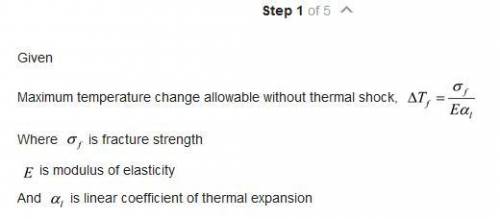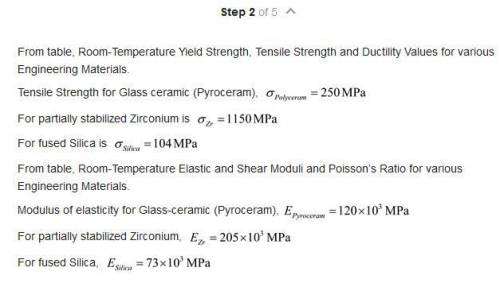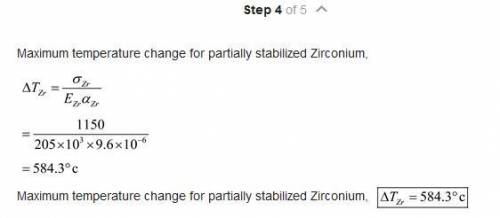
Engineering, 26.03.2020 21:59 ferg6
Equation 19.9, for the thermal shock resistance of a material, is valid for relatively low rates of heat transfer. When the rate is high, then, upon cooling of a body, the maximum temperature change allowable without thermal shock, ΔTf, is approximately where σf is the fracture strength. Determine ΔTf for glass, soda-lime. The values for modulus of elasticity, tensile strength, and coefficient of thermal expansion are 69 GPa, 69 MPa, and 9 x 10-6 °C-1 respectively. Enter your answer in accordance to the question statement 111111.111 °C

Answers: 2
Another question on Engineering

Engineering, 04.07.2019 18:10
Afluid flows with a velocity field given by v=(x/t)i.. determine the local and convective accelerations when x=3 and t=1.
Answers: 2

Engineering, 04.07.2019 18:10
Which of the following controllers anticipates the future from the slope of errors over time? a)-proportional b)-on/off c)-integral d)-derivative.
Answers: 2

Engineering, 04.07.2019 18:10
The flow rate of air through a through a pipe is 0.02 m5/s. a pitot static tube is placed in the flow. the radius of the pitot static tube is 1 mm. assuming the flow to be steady and the air to be at 300k, calculate the difference in total and static pressure if the diameter of the pipe is: (a) d 0.1 m d 0.05 m (c) d 0.01 m
Answers: 2

Engineering, 04.07.2019 18:20
Air flows over a heated plate àt a velocity of 50m/s. the local skin factor coefficient at a point on a plate is 0.004. estimate the local heat transfer coefficient at this point.the following property data for air are given: density = 0.88kg/m3 , viscosity 2.286 x 10 ^-5 kgm/s , k = 0.035w/mk ,cp = 1.001kj/kgk. use colburn reynolds analogy.
Answers: 1
You know the right answer?
Equation 19.9, for the thermal shock resistance of a material, is valid for relatively low rates of...
Questions









Chemistry, 24.12.2019 17:31

English, 24.12.2019 17:31

Physics, 24.12.2019 17:31



Physics, 24.12.2019 17:31

Mathematics, 24.12.2019 17:31


Social Studies, 24.12.2019 17:31












